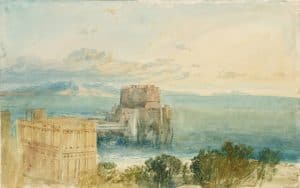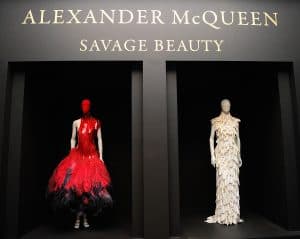The highly anticipated (and highly marketed) art exhibition that features long lines snaking out the gallery door is now a staple of the art scene. Though not without historical precedent — the Mona Lisa’s 1963 visit to the United States attracted over a million visitors — the “blockbuster” is a relatively recent invention.
The model was the Treasures of Tutankhamun. First attracting over a million visitors to the British Museum in 1972, it later toured six U.S. cities. The shows became a pop-culture touchstone, inspiring long lines, merchandising offshoots, and even a top-20 hit, Steve Martin’s “King Tut.”
Coming during an era of budgetary challenges for galleries, the blockbuster model was soon adopted by managers as a way to raise revenue and the profile of their institutions.
Here are ten pivotal blockbusters that had people lining up around the block.
1. Pablo Picasso: A Retrospective
(Museum of Modern Art, 1980)
This show was the first time in its history that the MoMA gave its space over to a single artist. A thousand items attracted over a million visitors — changes to MoMA’s physical plant had to be made to handle the influx — and the show set the standard of the single-artist blockbuster.
2. J.M.W. Turner
(Grand Palais, 1983)

One of the most comprehensive exhibitions of Turner’s work, with 267 pieces gathered to celebrate the 50th anniversary of the British Council. Loans from a number of British collections brought more than 500,000 visitors to one of France’s finest galleries.
3. Johannes Vermeer
(National Gallery of Art, 1995)
Unlike the vast number of pieces collected for the Picasso and Turner exhibitions, this hugely popular blockbuster included only 21 paintings by the Dutch master (out of the 35 he produced). A surprise hit cosponsored by the Royal Cabinet of Paintings, Mauritshuis, it brought in over 300,000 U.S. visitors before moving to The Hague. This was one of the first blockbusters based on intimate quality, not spectacular quantity.
4. Painters in Paris, 1895–1950
(Metropolitan Museum of Art, 2000)
A thematic blockbuster featuring over 100 paintings by a wide range of artists who worked in the City of Light, the show attracted nearly a million visitors. It provided both a sampling of prominent artists (such as Matisse, Picasso, and Chagall) and various art movements (such as Fauvism, the Cubism, and Surrealism).
5. The First Emperor: China’s Terracotta Army
(British Museum, 2007)
Like the Treasures of Tutankhamun, this blockbuster had as background diplomatic affairs — the continued integration of China into the world leadership — and took three years of negotiations to make possible. Over 850,000 visitors saw the Qin dynasty (221–206 B.C.) artifacts in their rare foray out of China.
6. Marina Abramovic: The Artist Is Present
(Museum of Modern Art, 2010)
Breaking the fine art mold, this retrospective of Abramovic’s career turned into a blockbuster centered upon performance art. Though infamous for several live nude performers recreating earlier works, the core of the show was a large, formally lit square in the center of which were two chairs. Abramovic sat in one. In the other, opposite her, any member of the public could sit and share her stare, which led to moments of both emotional catharsis and plain weirdness.
7. Alexander McQueen: Savage Beauty
(Metropolitan Museum of Art, 2011)

A cultural mashup with the world a fashion design, this celebration of the career of the British designer Alexander McQueen was organized by The Costume Institute and became one of the top 10 exhibitions in the history of the Met. It brought works usually seen on fashion runways or glossy photographs into a gallery space, creating a new context in which to consider the aesthetics of the nearly 200 assembled pieces.
8. David Hockney: A Bigger Picture
(Royal Academy, 2012)
Unlike many single-artist blockbusters, this show featured not only past works but also newly commissioned ones. These included large-scale landscape paintings of Hockney’s native Yorkshire and multimedia works — including his somewhat infamous iPad drawings — that made the show both a look back and an exploration of the future of visual art. The show became a surprise hit, attracting over 600,000 visitors, many standing in rain-drenched queues to enter.
9. Master of Impressionism, Claude Monet
(K11 Art Mall, Shanghai, 2014)
A reflection of the burgeoning Chinese art scene, this blockbuster was organized by billionaire Adrian Cheng. It brought prominent works from the Musée Marmottan Monet, including several of the Water Lilies series. Landscaping outside the K11 was even altered to recreate some of the backdrops of Monet’s work and the exhibition attracted 340,000 visitors.
10. Yayoi Kusama: Infinity Mirrors
(Hirshhorn Museum, 2017)
A blockbuster retrospective of the Japanese artist’s Infinity Mirror Rooms, the exhibition presented six of the more than twenty she has created, the most ever assembled in one location. Multimedia works which toy with the senses and a viewer’s conception of space, the show proved so popular — and the experience of the rooms so compelling — that there were not only long lines outside the Hirshhorn, but inside as well.
Sources
https://www.christies.com/features/Blockbuster-Shows-6061-1.aspx
https://www.independent.co.uk/news/when-art-imitates-entertainment-1317904.html







